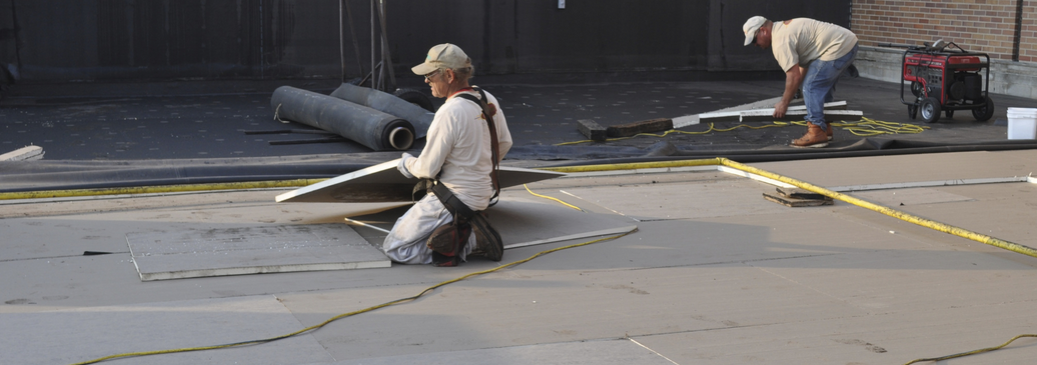In the days following the powerful assault of Hurricane Michael on the Florida Panhandle, images of widespread devastation headlined television news coverage and print media. Not as prone to hurricane activity as the rest of Florida, the area hit by the almost Category 5 storm had many older homes built prior to the enactment of stricter building codes put into place after Hurricane Andrew in 1992. As a result, many structures built to less stringent requirements were unprepared to weather the onslaught of wind, rain, and debris tossed by Michael’s sustained 155-mph winds.
Nothing can guarantee a structure’s integrity when faced with such brutal conditions. However, contrast the post-storm condition of those older structures with that of newer buildings and the benefits of more rigorous regulations are clear. The aerial images of the impacted communities illustrate the value of implementing building codes that can contribute to greater resiliency both for the structures themselves and for the safety and comfort of the people and property contained within them during and after a storm makes landfall.
Media coverage of the storm’s aftermath included profiles of some of the structures that fared better than their neighbors. The New York Timesran a profile entitled, “Among the Ruins of Mexico Beach Stands One House, Built ‘for the Big One’” and the Washington Post published an article entitled, “Houses intact after Hurricane Michael were often saved by low-cost reinforcements.”
When interviewed on CNN, Federal Emergency Management Agency Administrator Brock Long said, “… there’s a lesson here about building codes. The key to resiliency in this country is where our local officials and state officials are going to have to do something proactively to start passing building codes to high standards.”
As is often the case in the wake of a disaster, there is a profusion of interest in exploring strategies to protect communities and properties from devastation. These articles and interview reveal that building structures with conscious attention to resiliency can offer markedly improved performance in extreme weather. As an added bonus, many of the products and processes that deliver this resiliency can also contribute to decreased energy usage and operational costs for buildings regardless of the weather they’re subjected to.
Even before this summer’s series of destructive storms, elected officials and government agencies were working to implement wide-ranging strategies to protect our communities. Updating state and local building codes, which exist to safeguard life and protect private and public interests through regulating the design, construction practices, construction material quality, location, occupancy usage, and maintenance of buildings and structures, is one of the most effective ways to increase the safety and resiliency of our built environment.
Congressional Action
On two occasions this year, Congress enacted reforms for disaster preparedness that raise the profile and importance of building codes in planning for and recovering from disasters. The nation’s disaster relief law — the StaffordAct— was first reformed as part of the Bipartisan Budget Act and later reformed with permanent fixes under the FAA Reauthorization bill passed in October 2018.
Under these amendments, building code adoption and enforcement are added as eligible activities and criteria used in grant programs aimed at reducing the impact of future disasters. In other words, states that act to adopt modern building codes and standards will be eligible for additional federal assistance in the event disaster strikes. Moreover, the reforms allow damaged buildings to be rebuilt with federal support to better withstand future events, rather than merely restored to their pre-disaster condition.
While these changes do not specifically address energy codes, adopting and updating building codes will also lead to improvements in energy performance. Energy efficiency is a key part of a building’s — and a community’s — ability to withstand and quickly recover after a disaster. For example, a well-insulated building can maintain a comfortable temperature when power is lost or intermittent. Building energy codes will also encourage the construction of more robust building envelope systems that can help avoid the crippling effects of moisture intrusion that are common in severe weather events.
According to the National Oceanic and Atmospheric Administration, the first nine months of 2018 (through October 9) resulted in 11 weather and climate disaster events with losses exceeding $1 billion each. Moody’s Analyticsestimates that losses resulting from Hurricane Michael will cost between $15 and $21 billion. Damage to homes and businesses are a major contributor to the total financial impact of a disaster.
Buildings constructed to meet or exceed modern building codes can therefore play an important role in reducing the overall economic impact of natural disasters. According to the “Natural Hazard Mitigation Saves: 2017 Interim Report”published by the National Institute of Building Sciences, the model building codes developed by the International Code Council can save the nation $4 for every $1 spent. In addition, designing new buildings to exceed the 2015 International Building Code(IBC) and International Residential Code(IRC) would result in 87,000 new, long-term jobs and an approximate 1 percent increase in utilization of domestically produced construction material.
While people, pets and some belongings can be evacuated to safety with enough warning and resources, buildings can’t be moved to higher ground or be rebuilt overnight in anticipation of an oncoming storm. Indeed, buildings are often the only things separating people from the brutal forces of natural disasters. The protection they offer is often determined by the quality of the construction materials and the installation methods used, which are themselves often regulated by the safety standards in place at the time of original construction or major renovation.
The recognition by Congress that modern building codes deliver an answer to disaster preparedness is a positive for homeowners and businesses across the country. States now have added incentive to prepare for tomorrow by enacting and enforcing better building codes today. And more exacting building codes will create momentum to raise the bar for all of the codes that work together to create stronger and more resilient buildings that will contribute to better outcomes in extreme weather and reduced energy consumption in any weather.
About the author: Justin Koscher is president of the Polyisocyanurate Insulation Manufacturers Association (PIMA). For more information, visit www.polyiso.org.





Be the first to comment on "Building Codes: Everyday Tools for Disaster Preparedness and Relief"